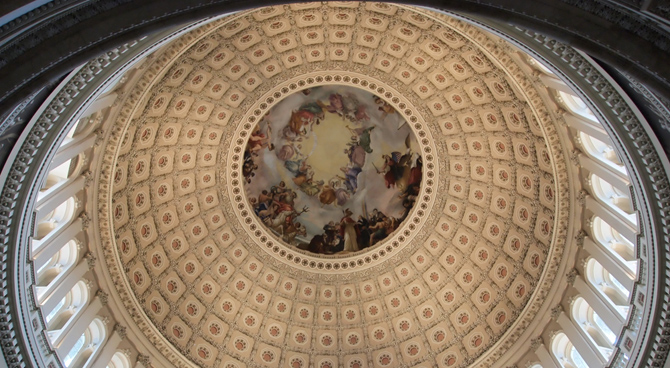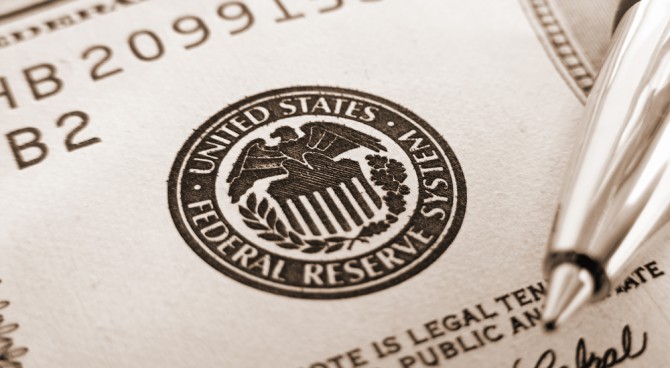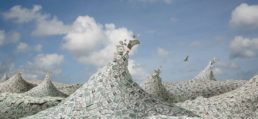Normal growth will drive up the demand for bank loans and induce lending of excess reserves.
By Phil Gramm and Thomas R. Saving
Dec. 13, 2017 6:37 pm ET
The asset base of the world’s financial institutions crumbled in the fall of 2008 as mortgage-backed securities collapsed and credit markets froze. The Federal Reserve responded by buying government bonds, pumping liquidity into the financial markets, and expanding bank reserves.
The Fed also did something that was not so widely noticed: It started to pay interest on excess reserves, effectively paying banks not to lend. That allowed the Fed to expand bank reserves and inject liquidity into the financial system without significantly expanding the money supply.
Though the recession ended in the summer of 2009, the economic recovery that followed lagged further and further behind historical norms. In an effort to stimulate the economy, the Fed undertook three monetary easing programs that doubled its postrecession balance sheet and bought, or offset by buying other securities, some 45% of all federal debt issued during the Obama era—four times the share of federal debt the Fed purchased during World War II.
Today, banks hold $12 of excess reserves for every dollar they are required to hold, and the Fed balance sheet contains 20% of all publicly held federal debt and 34% of the value of all outstanding government-guaranteed mortgage-backed securities. While the initial injection of liquidity into the economy in 2008 clearly helped stabilize the financial market and was a classic central-bank response to a financial crisis, the monetary easing program of the Obama era was unprecedented. At least in part due to monetary easing, the Obama administration was able to double the federal debt held by the public while reducing the cost of servicing that debt below the interest costs that had been incurred when the debt was only half as large.
In the past eight years, private loan demand has been weak in an economy kept in a stupor by high taxes and an avalanche of regulations. In this stagnant environment, the Fed has been able to manage a massive balance sheet and inflated bank reserves without igniting inflation or causing interest rates to rise, further crippling growth. But the Fed’s challenge will grow enormously when the economy returns to normal growth. That will drive up the demand for bank loans, increase interest rates, and induce banks to lend excess reserves. The money supply will start to grow.
If the Fed could find just the right mix of selling more assets and lowering the rate it pays on excess reserves, it could theoretically end up reducing its balance sheet and reducing bank reserves without either slowing economic growth or igniting inflation. But the danger posed by the Fed’s bloated balance sheet and the massive level of bank-held excess reserves is that an increase in economic growth would stimulate demand for bank credit and force the Fed to move quickly to sop up excess reserves. If it moved too slowly, the money supply would expand and the inflation rate would rise. But by selling government securities to reduce bank reserves, the Fed would be competing against both the government and private borrowers for available credit. Unless banks reduced excess reserves to offset Fed asset sales, those asset sales would drive up interest rates and threaten the sustainability of the recovery. The monetary easing of the Obama years, which did little to stimulate growth, could now be paid for with runaway inflation or a crippled recovery or both.
Complicating the matter further, the Fed can decide how much interest it pays on excess reserves, but any change in market interest rates will affect the willingness of banks to hold excess reserves and alter the response of banks to a change in the rate the Fed pays on excess reserves. A rise in market interest rates will also increase what economists call the velocity of money, the ratio of the value of money the public chooses to hold relative to the size of gross domestic product. Since velocity has fallen by 27% over the past decade as the cost of holding money fell to virtually zero, we can expect that a rise in interest rates would induce people to economize on the holding of money and cause demand for goods and services to rise. To maintain price stability in an environment of rising interest rates, the Fed would not only have to soak up existing excess reserves; it would also have to reduce bank reserves to prevent the increase in velocity from inflating demand and igniting inflation. But each time it sells securities to try to prevent inflation, the Fed will be potentially increasing pressure on interest rates and endangering the recovery.
Is it possible that the Fed, like Odysseus, can hug the cliff of Scylla with its high interest rates and avoid the Charybdis of inflation without crashing into the cliff and derailing the recovery? It is possible, but the Fed will not be headed by the wise Odysseus nor advised by Athena, the goddess of wisdom; it will be run by human beings. And the monetary excesses of the Obama era represent the greatest impediment to igniting and sustaining a full-blown economic recovery.
Mr. Gramm, a former chairman of the Senate Banking Committee, is a visiting scholar at the American Enterprise Institute. Mr. Saving is a professor of economics and director of the Private Enterprise Research Center at Texas A&M University.





